Making fresh, homemade Sambar Powder or Sambar Masala (also known as Sambar Podi in Tamil language) is a simple task that will yield incredible results. This deeply aromatic dry masala (spice mix) is easy to make at home, and is so much more flavorful than what you would buy at the store!
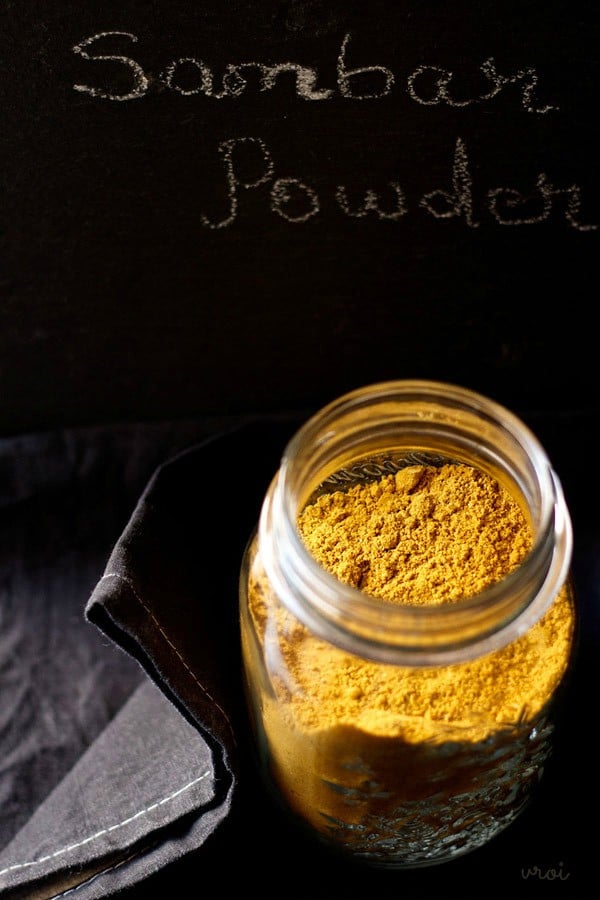
Table of Contents
About Sambar Powder
While I love the convenience of prepared spice mixes – I just don’t want to use them. Oftentimes the store bought versions are weak and/or stale.
To remedy this, I often make my own pre-mixed dry masalas using fresh, whole spices and herbs. The result is so much more flavorful!
Today I’m sharing my Mom’s sambar powder recipe with step by step photos – I’m certain you will love it!
My sambar podi is scented with citrusy coriander, earthy cumin, warming spices like fenugreek seeds, pungent black pepper, spicy chilies, and brightly colored with turmeric, making it the perfect blend for all of your sambar recipes.
If new to Indian cuisine, sambar powder is a special and unique spice blend added to the popular South Indian lentil and vegetable stew Sambar.
This easy spice mix takes just 30 minutes from start to finish, and one batch makes enough to fuel my household’s sambar obsession for up to 4 months.
If you are a fan of Indian food, I implore you to try making this delightful sambar masala; the flavor of your dishes will benefit greatly!
Tips for Best Homemade Spice Blends
Before making any homemade powder or spice mix, always keep a few things in mind so that you get the best flavor:
- Use spices that are as fresh as possible that have not yet completed their shelf period.
- Sort through the whole spices to remove any errant stones or insects. This is especially important for particular spices including coriander seeds, fenugreek seeds and cumin seeds.
- Dry red chilies should feel crisp to the touch and not have any moisture. I recommend you break them open prior to using to ensure they do not have any mold growing sneakily inside.
- The coriander seeds should also look fresh and feel crisp to the touch; if they appear to have mould or are not aromatic, then throw them away.
- Herbs and spices will all cook at different times. As such, it is important to work in batches when you are tempering the whole spices.
This recipe yields about 200 grams of sambar masala powder, which lasts me for 3 to 4 months. (For reference, I make sambar dishes once or twice per week.)
How to Make Sambar Powder
Roast the Spices
1. Heat a pan and then add ½ cup coriander seeds and 2 tablespoons cumin seeds.
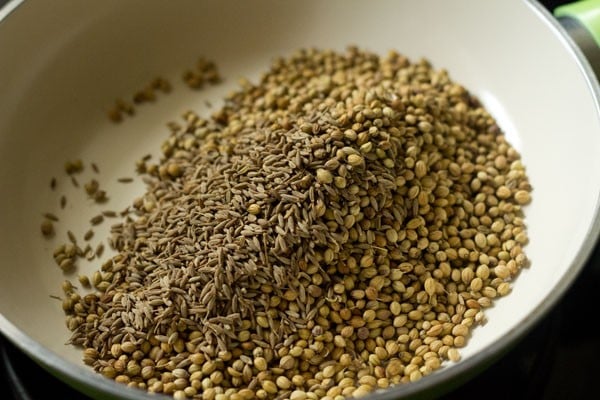
2. On a low heat, roast the coriander and cumin, stirring often, until they become fragrant and change color.
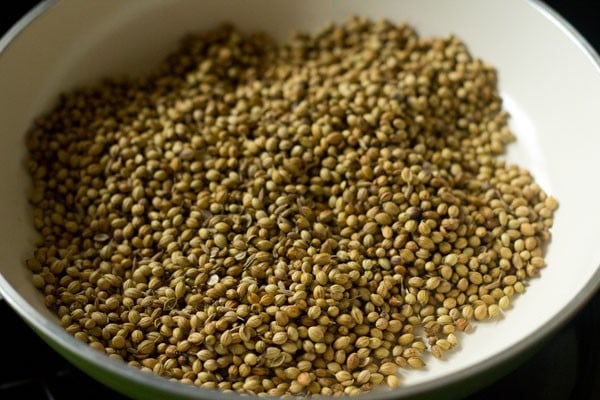
3. It takes roughly 1 to 2 minutes to roast these spices over a low heat. They should smell aromatic. Do not brown them too much.
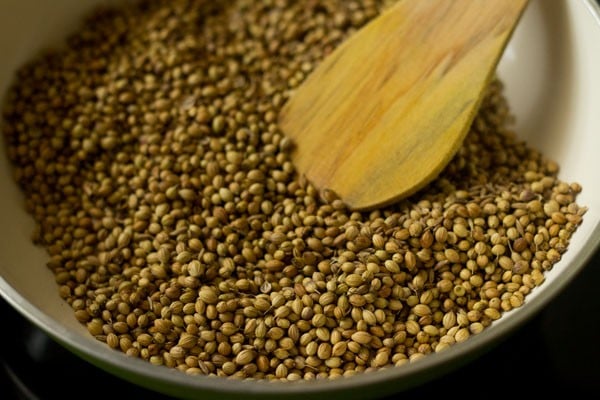
4. Remove them from the pan and add them to a large plate or tray.
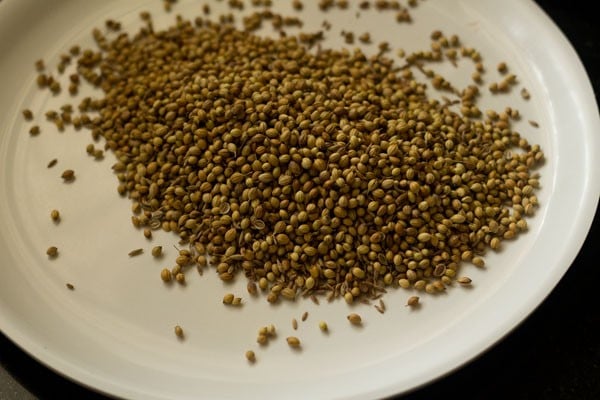
5. Wipe the pan with a cotton napkin and add 16 to 18 dry red chilies. Be sure to remove the crown and the seeds from the red chilies before roasting them.
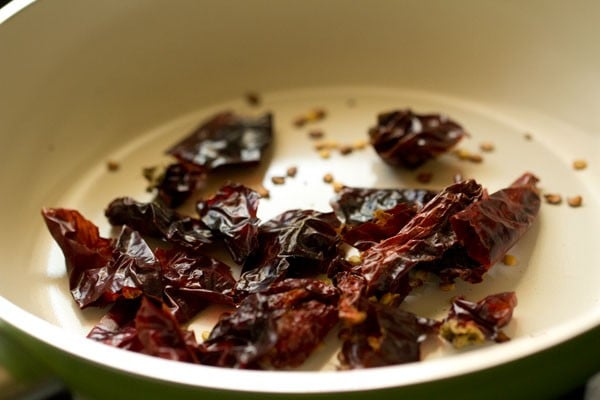
6. Roast the red chilies, stirring them till they change color and release a pungent smoky aroma. Place the roasted red chilies on the same plate as your other toasted spices.
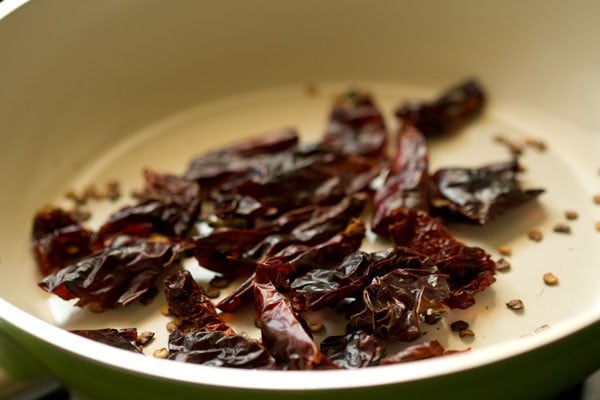
7. Add 1.5 teaspoons fenugreek seeds (methi seeds). Stir often and roast them.
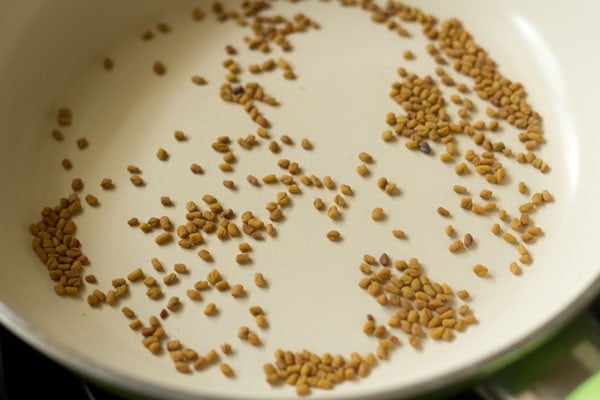
8. Roast till they get browned, but be careful not to burn them.
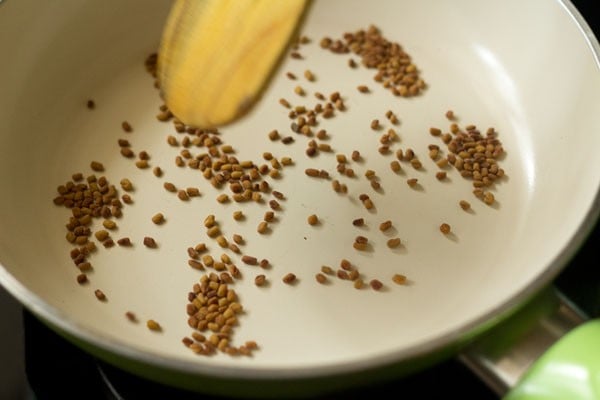
9. Remove to the same plate.
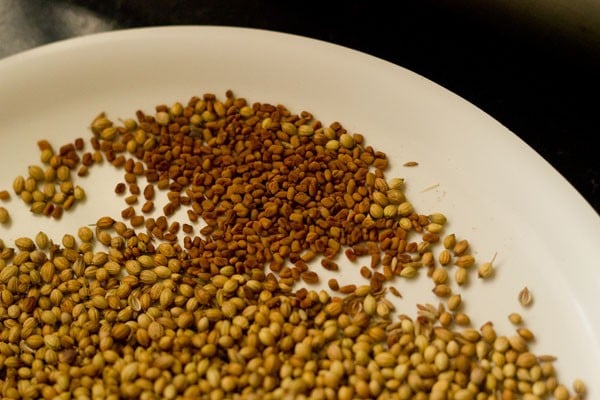
10. Add 1 tablespoon whole black peppercorns (sabut kalimirch).
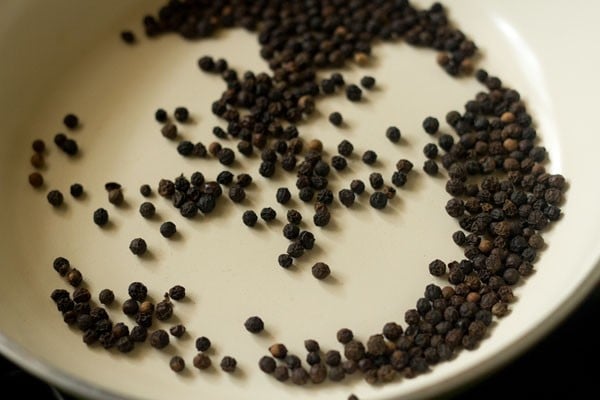
11. Stir often and roast.
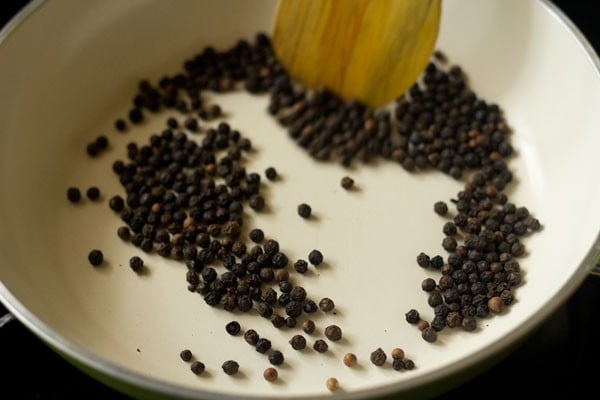
12. As soon as the black pepper becomes aromatic, remove them from the pan, to the same plate where all the spices are kept.
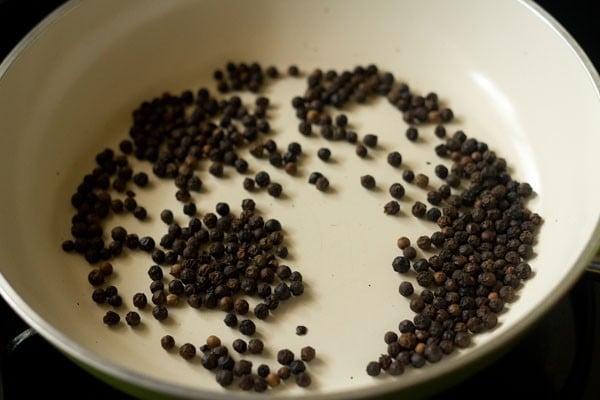
Roast Lentils
If you prefer, you can rinse the lentils in water once or twice before roasting them. Rinse and drain all the water. Spread them on a small plate. Dry them in sunlight for some minutes or keep them under a fan until they are dried.
13. Now add 2 tablespoons chana dal (split and husked bengal gram) to the same pan.
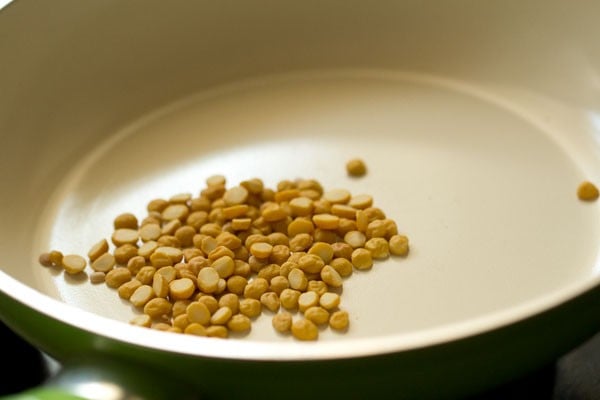
14. For uniform color and doneness, continue stirring at intervals while roasting the chana dal. Chana dal takes longer to cook than the spices; the lentils should become golden before removing to the plate with the other toasted spices.
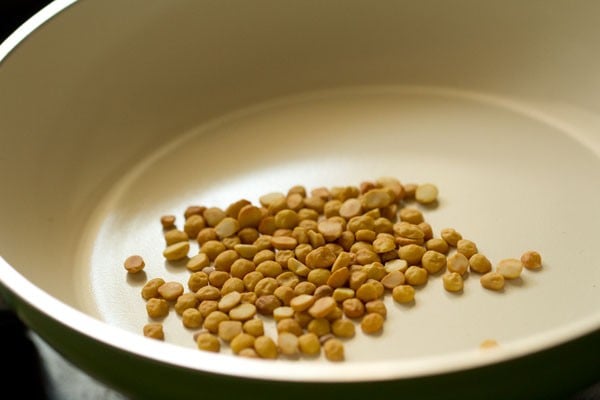
17. Now add 1 tablespoon urad dal (split and husked black gram) to the pan.
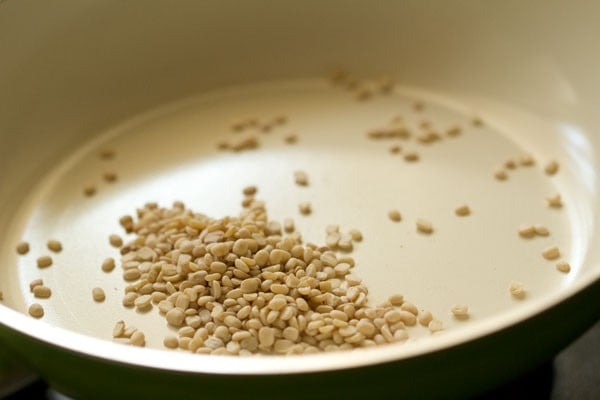
18. Keep on stirring these lentils, roasting till they become golden and aromatic. Remove them to the same plate as the other spices.
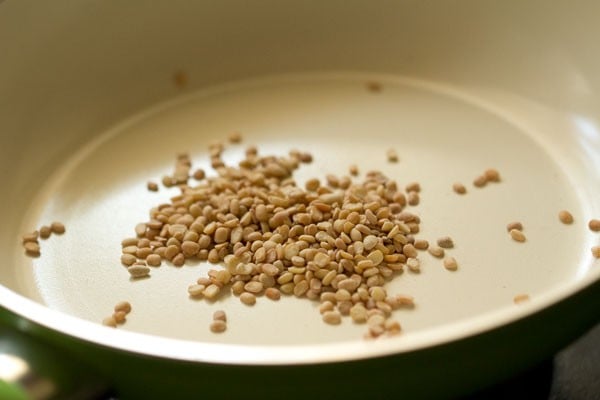
Roast More Ingredients
19. Add ⅓ cup curry leaves. Roast the curry leaves stirring them till the leaves become crisp. Keep aside.
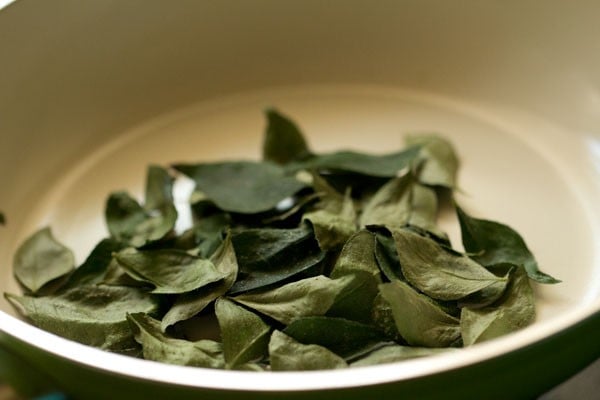
20. Now add ½ tablespoons of black mustard seeds (rai).
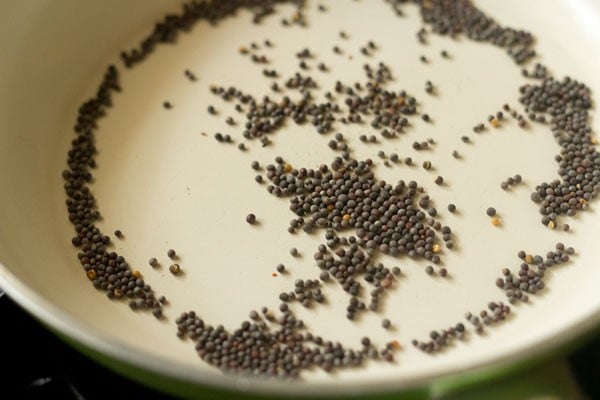
21. When all the mustard seeds finish popping, then remove them and keep aside.
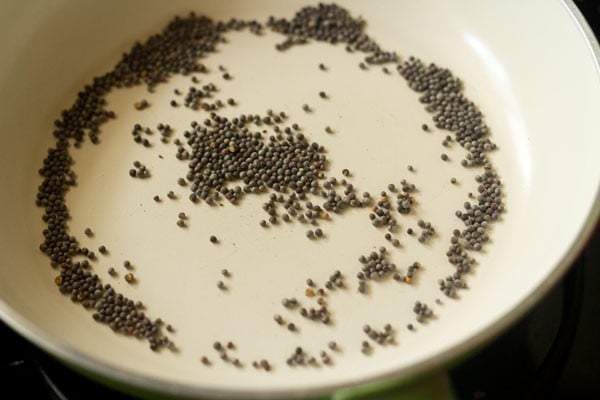
22. Switch off the heat now and add ½ tablespoon asafoetida (hing) in the pan.
Note: If you are celiac, please be sure to read the label on your asafoetida (hing); many commercially available brands process this spice with wheat.
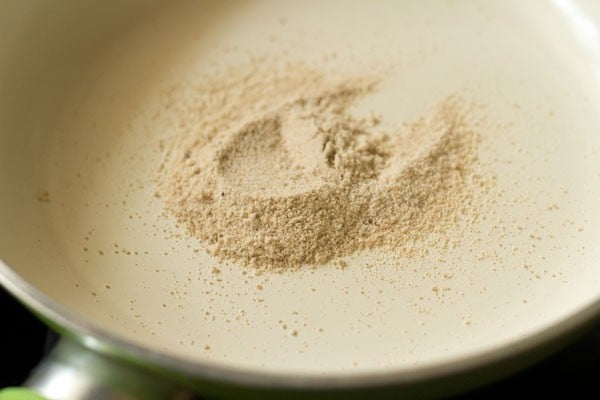
23. Quickly stir as soon as you add the hing (asafoetida).
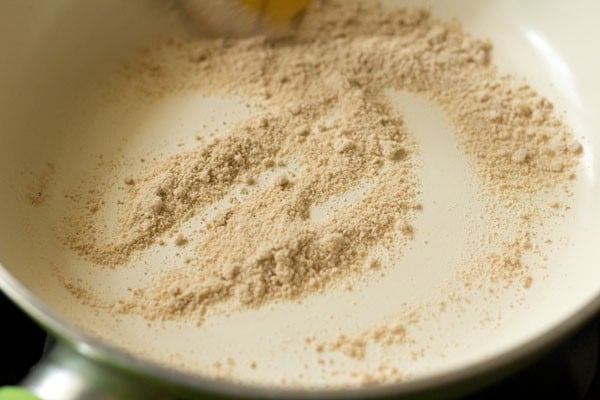
24. When the color changes and you can smell the asafoetida (hing) in the air, remove the pan from heat and keep it aside.
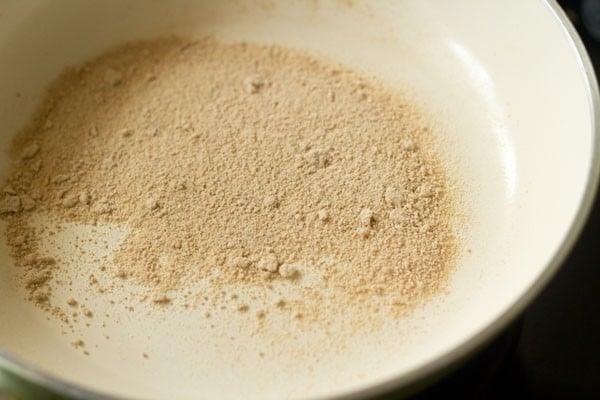
Make Sambar Masala
25. Let all the roasted spices cool down to room temperature.
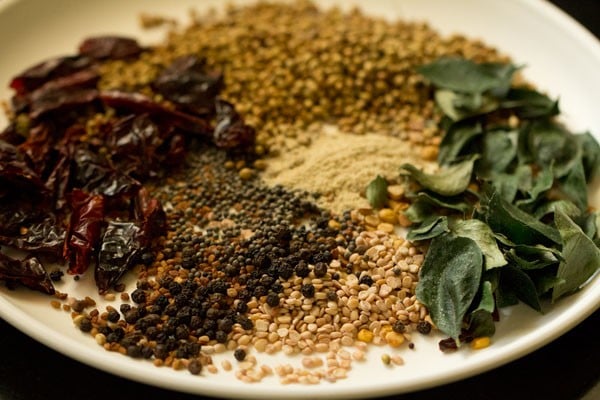
26. Add the cooled spices to your spice grinder. Also add ½ tablespoon of turmeric (haldi). Depending on the size of your grinder jar, you may need to work in batches.
Please note, I have used turmeric powder and not turmeric root, as turmeric root is difficult to grind in my mixer-grinder. You can use 2 inches dried turmeric root that you crush to small bits in a mortar-pestle before adding in the grinder jar.
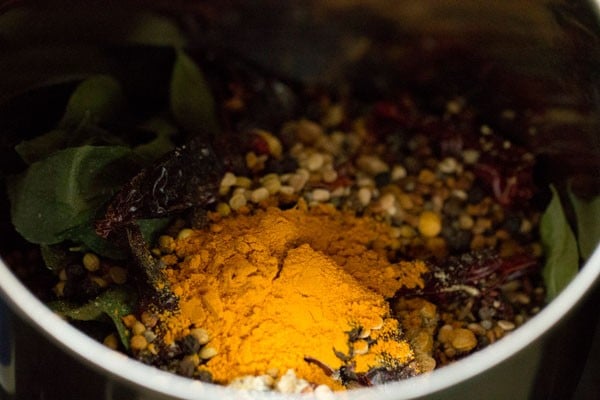
27. Grind to a fine powder.
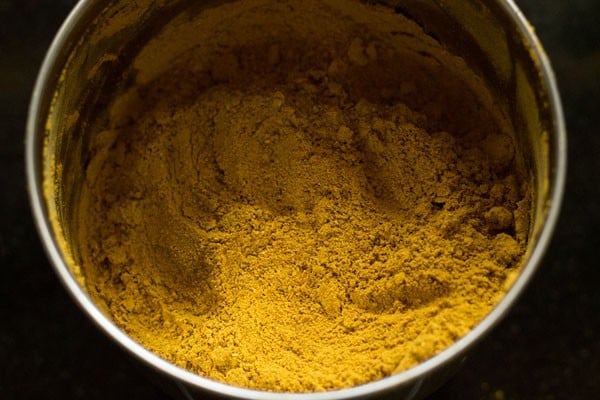
28. Remove to a plate or bowl and mix very well. Due to grinding, the powder will become warm.
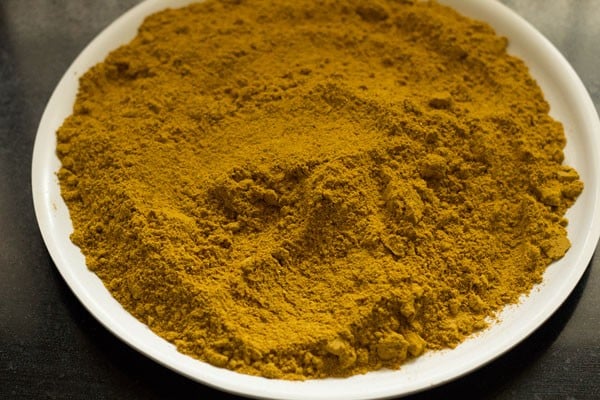
Store Sambar Powder
29. As soon as the masala powder cools to room temperature, then carefully spoon it in a jar.
If the masala powder does not become hot or warm while grinding, then you can store the masala powder directly in the jar.
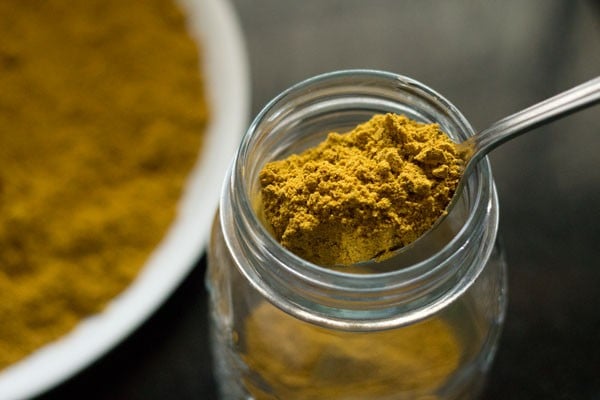
30. Do tap and shake the jar, so that the sambar podi settles down while filling the jar.
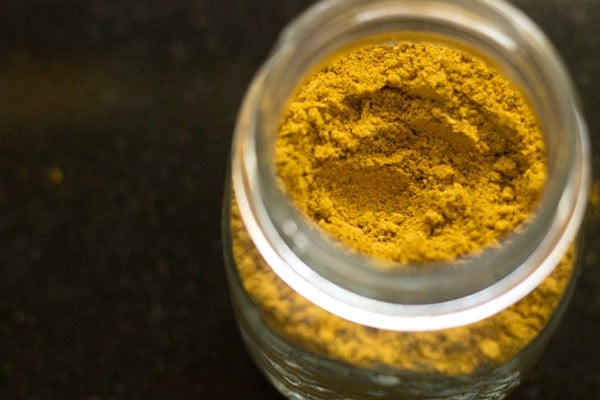
31. Close tightly with a lid and keep it at room temperature.
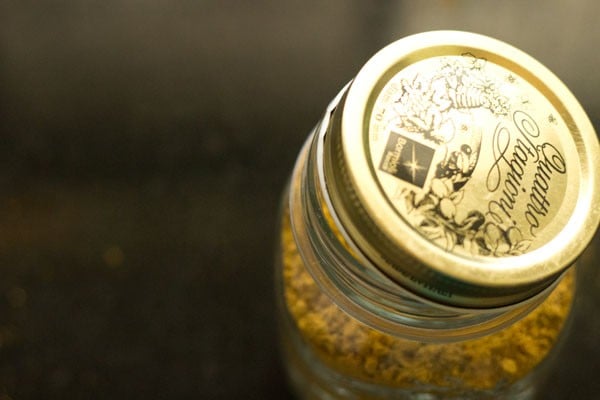
32. Add sambar powder to any of your favorite sambar recipes. For a serving of 4, use about 2 to 3 teaspoons of this sambar podi.
The recipe can be scaled to make a large batch. If you do scale the recipe up largely, then I recommend to grind the roasted ingredients in a local grinding mill (chakki).
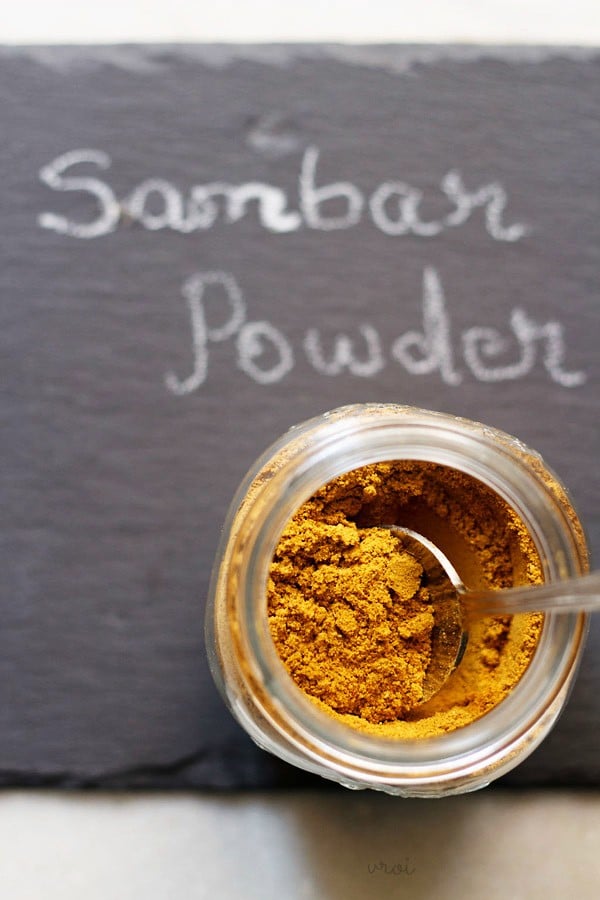
Storage Tips and Suggestions
Store sambar masala in a clean air-tight jar in a dry and cool place. When taking the spice mix from the jar, never use a wet spoon. Always use a dry spoon.
After you finish taking the required amount of sambar podi for your recipe, close the jar well and keep it back in the same dry and cool place.
If any moisture or water goes into the jar, it will deteriorate the spice mix and may get moldy or have fungus.
This sambar powder keeps well for 3 to 4 months in a dry and cool place. Store it in a place in your kitchen which is cool, dry and does not have any moisture.
You can also choose to store it in the refrigerator if you live in a hot and humid region.
I would not recommend to store sambar powder in the masala dabba (masala container box) as the aroma will fade over a period of time. It is best to store it in an air-tight steel or glass jar or container.
How To Use Homemade Sambar Powder
This homemade sambar masala powder can be used in a variety of different dishes. You can also perk up vegetable stir fries or sautéed vegetables, by adding this sambar podi. It will give the dish a complex taste and flavor.
If you plan to add this spice mix to make sambar, here are a few of my favorites:
- Tomato Sambar
- Mullangi Sambar (Made with white radish)
- Onion Sambar
- Sambar Rice
- Drumstick Sambar (Made with Moringa Pods)
FAQs
Simply omit the urad dal if you are unable to eat it!
Use byadagi red chilies, or a half-half of kashmiri red chilies and byadagi red chilies.
Methi (fenugreek) has a bit of a bitter flavor on its own, so if you are eating the spice mixture plain, it may end up tasting rather sharp or bitter.
Once you add it to a sambar recipe, it should taste good! If the resulting recipe tastes bitter, then I expect you likely roasted your whole spices for too long.
Yes of course! Coconut gives a nice flavor to the sambar masala. Add about ⅓ cup of shredded desiccated coconut (unsweetened). You do need to roast the coconut until golden.
Later powder or grind the roasted coconut with the remaining roasted ingredients. But keep in mind that with coconut the shelf-life of sambar powder will reduce. I suggest to keep this sambar powder with coconut in the refrigerator and not at room temperature.
More Homemade Indian Spice Blends
Please be sure to rate the recipe in the recipe card or leave a comment below if you have made it. For more vegetarian inspirations, Sign Up for my emails or follow me on Instagram, Youtube, Facebook, Pinterest or Twitter.
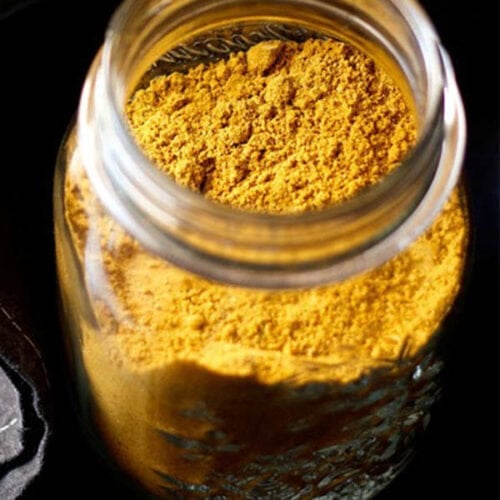
Sambar Powder Recipe (Sambar Masala Spice Blend)
Ingredients
- ½ cup coriander seeds – 40 grams
- 2 tablespoons cumin seeds
- 16 to 18 dry red chillies – halved and seeds removed
- 1.5 teaspoon fenugreek seeds (methi seeds)
- 1 tablespoon black pepper
- 2 tablespoon chana dal (split husked bengal gram)
- 1 tablespoon urad dal (split husked black gram)
- ⅓ cup curry leaves
- ½ tablespoon mustard seeds
- ½ tablespoon asafoetida (hing)
- ½ tablespoon turmeric powder (ground turmeric)
Instructions
Roasting Spices, Lentils
- Before you begin roasting the ingredients, measure them and set aside. Halve or break the dry red chillies and remove the seeds with a spoon. Also remove their crowns.
- Heat a frying pan and then add coriander seeds and cumin seeds.
- On a low heat, stir and roast the coriander seeds and cumin seeds, till they become fragrant and change color. It just takes 1 to 2 minutes in low heat to roast these. They should smell aromatic. Do not brown them too much.
- Then remove from the pan and add to a large plate or tray.
- Wipe the pan with a cotton napkin and add dry red chilies. Remove the crown and seeds from the red chilies, before roasting them.
- Roast the red chilies, stirring them till they change color and you can get their pungent smoky aroma. Place the roasted red chilies in the same plate.
- Now add the fenugreek seeds. Stir often and roast them. Roast till they get browned but make sure not to burn or brown them too much. Remove in the same plate.
- Add black peppercorns. Stir often and roast. The black peppers will get aromatic and this is the time you remove them from the pan. Add roasted black peppers to the same plate, where all the spices are kept.
- Now add chana dal to the same pan. Keep on stirring at intervals, while roasting the chana dal. Chana dal takes longer to cook than the spices. The dal should get browned or golden. For uniform cooking and color, keep on stirring them. Remove aside in the same plate.
- Now add urad dal to the pan. Keep on stirring these lentils too while roasting them. Roast till they become golden and you a get a nice waft of the roasted urad dal. Remove them in the same plate.
- Add curry leaves (fresh or dried). Roast the curry leaves till the leaves become crisp. Keep aside.
- Next add mustard seeds. When all the mustard seeds finish popping, then remove them and keep aside.
- Switch off the heat now and add asafoetida (hing) in the pan. Quickly stir as soon as you add the asafoetida.
- Only the color needs to change of the hing and you should get its aroma. Remove and keep aside.
Making sambar powder
- Now let all the roasted spices cool down and come at room temperature.
- In your grinder jar, add the spices. Also add turmeric powder. I ground in two batches. Depending on the size, you can grind in 2 to 3 batches or in one go.
- Grind to a fine powder.
- Remove the ground sambar powder on a plate. If grinding in batches, remove the ground masala on a plate and mix very well. Due to grinding the sambar powder will become warm.
- Once the sambar powder cools at room temperature, then spoon it carefully in a jar.
- Do tap and shake the jar, so that the sambar podi settles down while filling the jar.
- Close tightly with a lid and keep at room temperature. Use as needed when making any recipes with it.
Usage and Storage Suggestions
- Add sambar powder to any of the sambar recipes you make. For a serving of 4, add about 2 to 3 teaspoons of this sambar masala.
- Store the sambar masala powder in a clean air-tight jar in a dry, cool place. When taking the spice mix from the jar, always use a dry spoon. Never use a wet spoon.
- Note that if any moisture or water goes into the jar, it will deteriorate the spice blend and may get moldy or have fungus.
- After you are done with taking the required amount of sambar masala for your recipe, close the jar well with its lid.
- This sambar powder keeps well for 3 to 4 months in a dry and cool place. Store it in a cool and dry place in your kitchen which does not have any moisture. if you live in a hot and humid region then store in the refrigerator.
Notes
Nutrition Info (Approximate Values)
This Sambar Powder post from the archives first published in October 2015 has been updated and republished on October 2021.
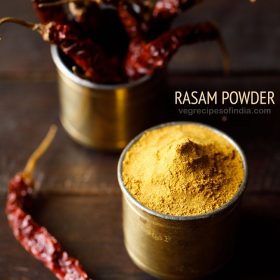
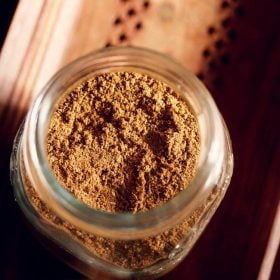
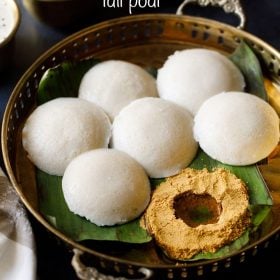
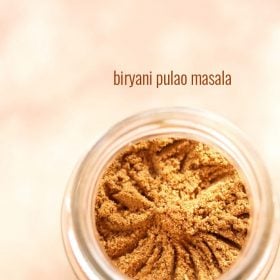
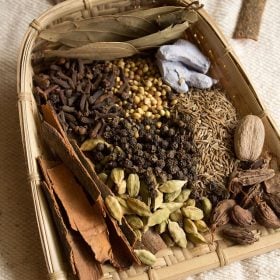
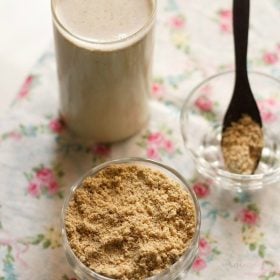
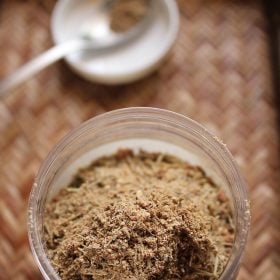
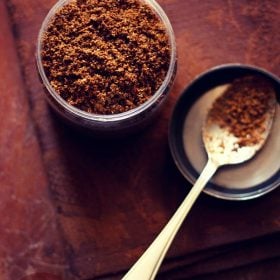








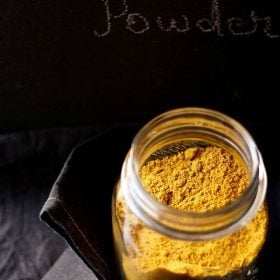
Thank you so much Dassana!! It’s the first time I ever tried preparing Sambhar and that too with homemade Sambhar powder…. Everyone at home just loved it!!!! I actually tried with half of the quantity you specified.. and it is over within one week.. preparing it again today with the quantity mentioned ???????? but before that, wanted to give you the appreciation you so deserve for turning a North-eastern Indian into a pro Sambhar maker ????????
most welcome deepshikha. so glad to know this. anyone can cook and make delicious food if the recipe is foolproof and presented well. every day even i learn so many things be it in life or cooking. i still need to try my hands on northeastern indian food which i never make except for thukpa and momos ????. thanks again and wish you all the best.
I love ur recipes ma’am, they r awesome. Some recipes r quick, time saving n always tastier. Thank u so much for ur efforts n sharing ur good work with us.
thank you dr deepmala ????. felt good to read your comment. most welcome and happy cooking.
Hi dassana,
Can urad dal be skipped?
It’s forbidden in diet of one of my folks..
Thanks a lot for the recipe.
hi ruchi, urad dal can be skipped. no issues. welcome.
Thanks a lot for such a fast response!
welcome ruchi. now i reply everday to comments in the evening. i have been travelling too much last year and even this year so far. now settled and travelling has stopped, so having some time to reply to comments and take care of the blog.
Hi, in this recipe the cup refers to the measurement of 250 ml right??
yes the cup measures 250 ml. will add in the recipe card. while changing the format i forgot to add.
Hi Amit, First time I saw your recipe, on Google. Usually I go to YouTube first. The best recipe for Sambhar powder and very well written instructions with pictures to look at.
I have a question, when I make dosa it is crispy first a few minutes after putting in a plate, it gets softer. How to make crispy dosa that stays crispy in the plate till end?
Please help. Thank you very much.
thanks a lot pooja. to get crispness dosa, some ingredients are added like chana dal or more of urad dal in the dosa batter. these dosas stay crispy for a long time. if proportion of urad dal is increased, it gives crisp dosas. if proportion of rice is more, it yields soft dosas.
Thanks for the go-to recipe for Sambhar powder…I can never remember the proportions right 😛 so your recipe comes quite handy. Also. the pictures help a lott..I have got compliments from my in-laws for the aromatic and tasty sambhar powder. Thanks once again..:)
Welcome Shubs. Glad to know that everyone liked the sambar powder recipe. Thanks for this lovely feedback.
Why do Onion is added to ready made masala powder…. Will the taste differ in this homemade powder from the market one?
i presume onion is added as it gives more strong flavor. but in sambar powder, onion is not added. each sambar powder has a different taste and flavor. it all depends on the types of spices used and their amount.
Heyyy.. thanks a lot amit. Your recipies has made my newly married life easier. All recipes are quiet awsome and easy to follow bcz of the pics u add. I try 1 recipe every evening and when I serve it to my husbnd he likes them soo much. Thank u soooo much for your uploads. There is a request plz add some new snacks recipies.
Thanks a lot again ????
thanks a lot and nice to know. i have already added many snacks and starter recipes.
i really like your recipes. by learning from web site.i really can cook.thanks to you
welcome grifath
Thank you so much for the recipe. While making sambhar powder washing of dals isn’t needed?
no need of washing dals as the dals are roasted on a low flame.
Hi,
If I were to use coriander powder instead of its seeds, then what would be the proportion? Thanks!
Welcome Pranjal. Same quantity.
Thanks for the prompt reply.Also I would like to know red chillies in grams measure.I already cooked dal mixture,waiting to make sambar powder as soon as I hear from you.Thanks once again.
barb, i have not measured the red chilies in grams and right now i do not have byadagi chilies, so that i can measure them. so unable to help you here you can just add 18 byadagi chilies.
Which chillies will give restaurant style flavour?Kashmiri chillies or byadagi chillies will taste good.I have both the chillies with me.Also too much spicy is not a problem for us.Please let me know ASP.
use byadagi red chilies. you can also use half-half of kashmiri red chilies and byadagi red chilies.
hi dassana!prepared this powder yesterday & added it sambar today.result was- awesome & tasty sambar.thanks for sharing this recipe
thanks meveera and welcome. glad to know 🙂
Hi dassana,
The ready-made sambar masala often makes the curry way too spicy for us. Hence, I was thinking of trying to make it at home…
In the sambar masala, do red & black pepper add any flavour or they are there just to contribute spiciness? I mean, can I skip the red chilly altogether and half the black pepper?
ruchi, both red and black pepper add to flavor and also a bit of heat. generally sambar powder is not spicy. also do use red chilies which are low in heat and spiciness, like kashmiri red chilies or byadagi red chilies. i would suggest not to reduce either as then some flavor profile is lost.